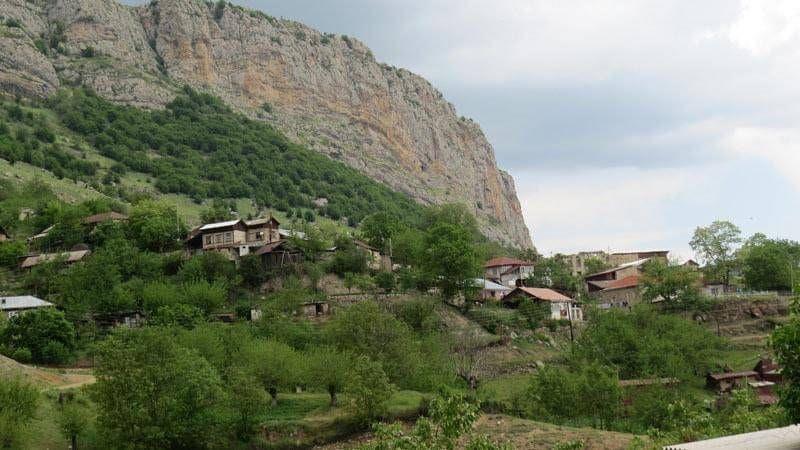
Charter Of Dashalti State Nature Reserve Approved
The Charter of the Dashalti State Nature Reserve of Azerbaijan has been approved, Azernews reports.
The Ministry of Ecology and Natural Resources' Collegium has adopted a decision in this regard.
The Charter outlines the operational directions of the Reserve, the characteristics of its special protection regime, and the measures for its protection.
The general provisions of the Charter state that the Dashalti State Nature Reserve is a territory of special importance for the preservation and restoration of natural complexes or their components (including rare and endangered species such as the Purple Violet, Hirkan Boxwood, Brown Flax, Garabagh Tulip, Rock Bramble, Dotted Orchid, Magpie Mallow, Shovit Onion, Schmidt Tulip, Shusha Peony, Shusha Oak, Oak-leaved Azat, Icelandic Cetraria, Mountain Ramalina, European Lynx, European Roe Deer, Golden Eagle, Common Swift, Broad-eared Bat, Southern Horseshoe Bat, etc.) and for maintaining ecological balance.
The territory of the Reserve is classified as a specially protected nature area of national significance, and a legal regime of special protection is applied to this area. To protect the land and water (aquatorium) areas of the Reserve from external anthropogenic impacts, sanitary protection zones are established for these areas.
The document also states that land plots for the establishment and expansion of the Reserve are retained in the relevant reserve land fund based on the schemes of specially protected nature areas, and restrictions are imposed on land use in these areas.
The Charter further defines the operational directions of the Reserve. These include the preservation and restoration of natural complexes or their components, maintenance of ecological balance, ensuring compliance with established restrictions on economic activities by landowners, users, and leaseholders, and the implementation of scientific, cultural, educational, and limited economic activities.
Additionally, the protection of natural areas to restore and maintain the genetic fund, biological diversity, ecological systems, and natural complexes and objects in their natural state is to be carried out. This also includes conducting environmental monitoring within the framework of state monitoring of the environment and natural resources in the Reserve's territory, applying modern approaches to ensure the restoration of the unique forest fund and protected natural complexes, thereby contributing to the transformation of the region into a "green zone."
According to the Charter, the ministry's regional body will oversee state control over the condition of the Reserve, the implementation of measures for its protection, conservation, and restoration, and compliance with the rules and requirements specified in normative legal acts.
It is noted that the transfer of the Reserve's management, use, or lease to legal and physical entities is prohibited. Individuals found guilty of violating the Reserve's regime will bear civil, material, administrative, and criminal responsibility as provided by law.
Damages to the Reserve resulting from violations of the requirements of normative legal acts on specially protected nature areas and objects will be compensated in accordance with the procedures outlined in the Civil Code and other normative legal acts related to nature protection.
The following activities may be prohibited or restricted within the territory of the reserve:
- Geological exploration and extraction of mineral resources;
- Draining of waterlogged areas and carrying out land reclamation activities;
- Utilization of the plant world for economic purposes, including use as hayfields and pastures;
- Hunting and fishing (with the exception of fish farming and scientific research purposes) and the use of wild fauna species for economic purposes and hunting;
- Application of any chemical, biological, or physical impact on the environment;
- Organization of mass sports and entertainment events, setting up tents, and lighting campfires;
- Construction of buildings and structures, public roads, pipelines, and other communication lines;
- Plowing of land, collection of wild plants, gathering of collections, and conducting scientific research that involves removing plants and animals from their natural environment without special permission;
- Use of surface and underground waters to meet the water needs of agriculture, industry, hydroelectric power, water transport, and other economic activities;
- Timber harvesting, collection of secondary forest resources, additional use of the forest, and forest use for the needs of the hunting economy.
Legal Disclaimer:
MENAFN provides the information “as is” without warranty of any kind. We do not accept any responsibility or liability for the accuracy, content, images, videos, licenses, completeness, legality, or reliability of the information contained in this article. If you have any complaints or copyright issues related to this article, kindly contact the provider above.






















Comments
No comment